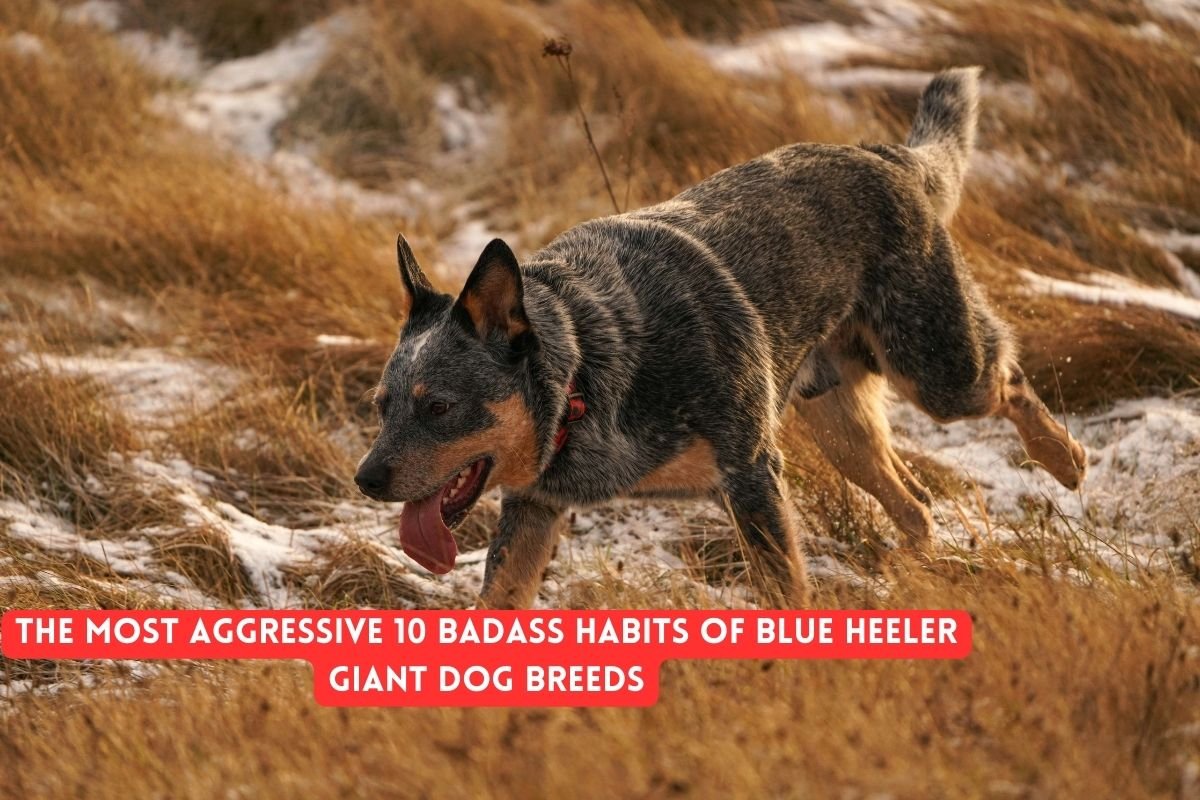Blue Heelers, also known as Australian Cattle Dogs, are renowned for their robust and energetic nature. These medium-sized working dogs possess a formidable combination of intelligence, agility, and an unyielding work ethic. When discussing their habits, it’s crucial to understand that while they can exhibit aggressive tendencies, these behaviors often stem from their inherent drive to protect and herd. Let’s delve into the ten most aggressive and badass habits of Blue Heelers.
Herding Instincts
Blue Heelers are born herders. Their instinct to control the movement of livestock can translate into nipping at the heels of people, especially children. This behavior is not out of malice but rather a deeply ingrained habit to maintain order.
Protective Nature
One of the most notable habits of Blue Heelers is their intense loyalty and protectiveness. They are naturally suspicious of strangers and will not hesitate to defend their territory and family from perceived threats, often with growling and barking.
High Energy Levels
Blue Heelers are high-energy dogs that require ample physical and mental stimulation. Without sufficient exercise, they can become destructive and display aggressive behaviors like chewing furniture or digging.
Dominance Assertion
These dogs often exhibit dominant behaviors, especially around other animals. They might try to assert their dominance through aggressive posturing or growling, particularly if they feel their position is being challenged.
Possessiveness
Blue Heelers can be extremely possessive of their belongings, including toys and food. They may growl or snap if they feel their possessions are being threatened, showcasing a territorial instinct.
Biting as Communication
Though generally not harmful, Blue Heelers use their mouths to communicate. Nipping and biting can be common, especially if they are trying to get attention or signal displeasure.
Alertness and Reactivity
Their heightened sense of alertness makes them highly reactive to sudden movements or noises. This reactivity can sometimes escalate to aggressive barking or lunging, particularly if they are startled or feel threatened.
Tenacity in Tasks
Blue Heelers exhibit a relentless work ethic and tenacity in tasks. This can translate to a stubbornness that might appear aggressive when they are focused on completing a job or guarding their territory.
Early Socialization Needs
Without proper socialization from a young age, Blue Heelers can become fearful or aggressive towards unfamiliar people and animals. This makes early training and exposure to different environments crucial.
Independence
These dogs have a strong independent streak. While this makes them excellent problem solvers, it can also lead to aggressive behavior if they feel constrained or overly controlled.
Conclusion
Blue Heelers are remarkable dogs with a plethora of impressive traits, including their tenacity, intelligence, and unwavering loyalty. Their aggressive behaviors, often mistaken for mere hostility, are usually expressions of their instinctive drives and protective nature. With proper training, socialization, and adequate physical and mental stimulation, these habits can be managed effectively, ensuring that Blue Heelers are both badass and beloved companions.
FAQs
Are Blue Heelers suitable for families with children?
Yes, but they require proper training to curb their herding instincts and ensure gentle behavior around children.
How much exercise do Blue Heelers need daily?
They need at least 1-2 hours of vigorous exercise daily to prevent boredom and destructive behaviors.
Can Blue Heelers be trained to reduce aggressive behaviors?
Yes, consistent training and early socialization can significantly reduce aggressive tendencies.
Do Blue Heelers get along with other pets?
They can, with early socialization, though they might exhibit dominance or herding behaviors around other animals.
What is the best way to manage a Blue Heeler’s energy?
Engage them in regular physical activities and mental challenges like agility training or herding games to keep their energy in check.
